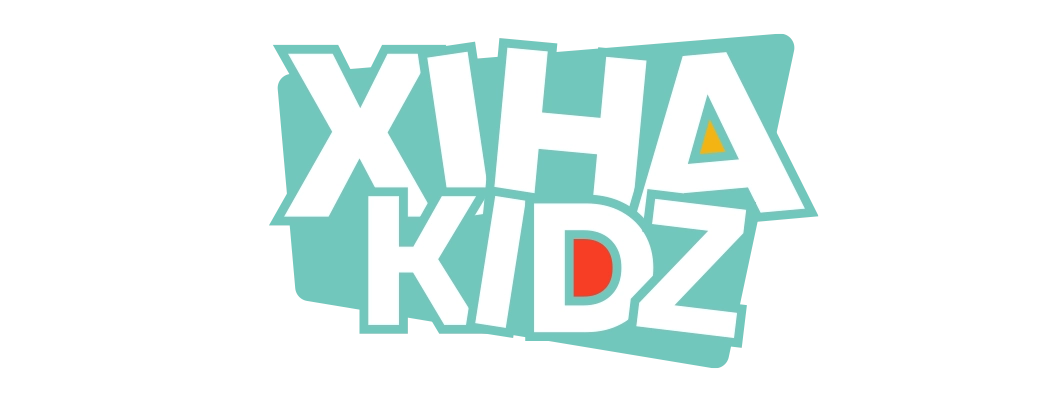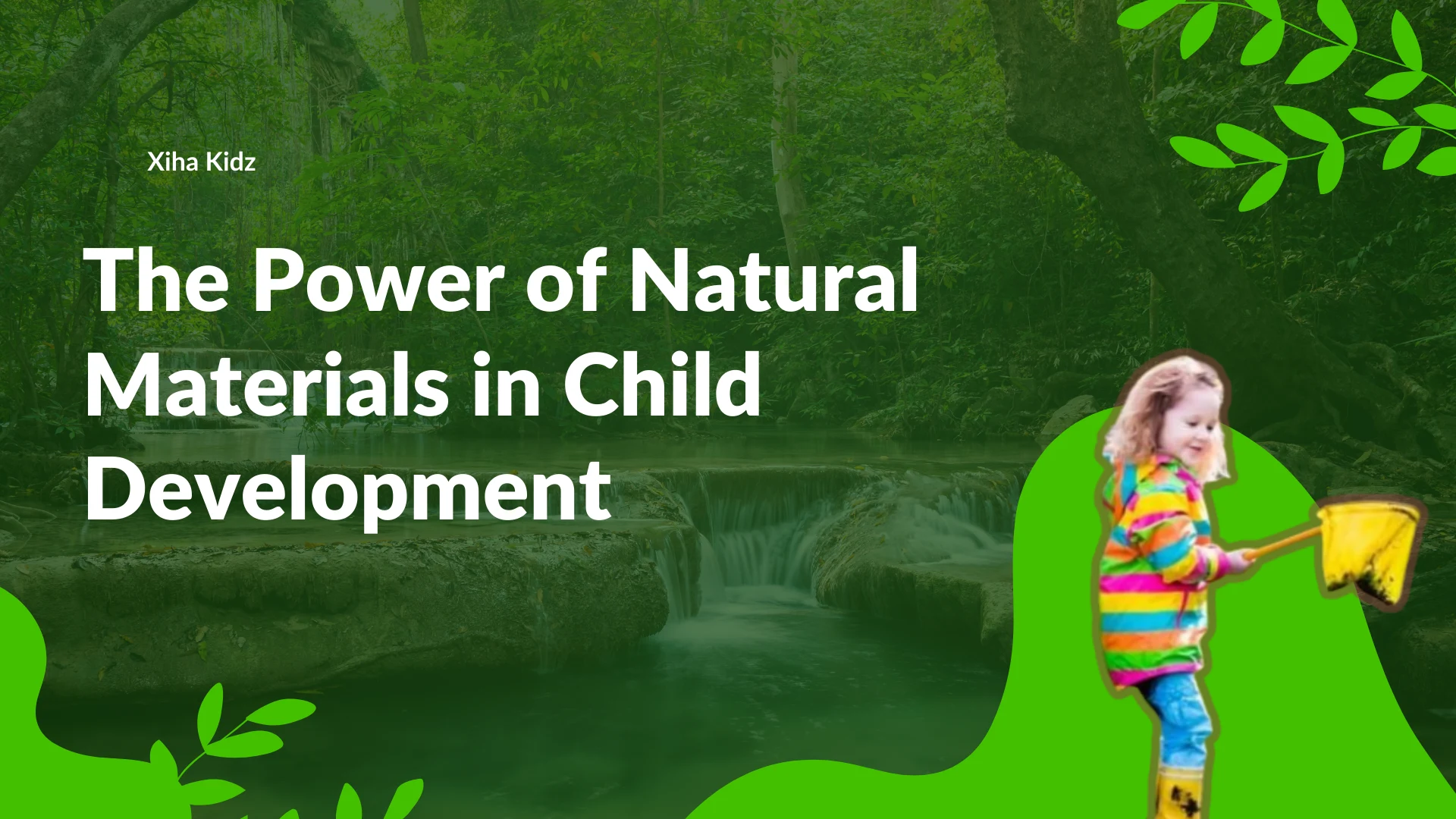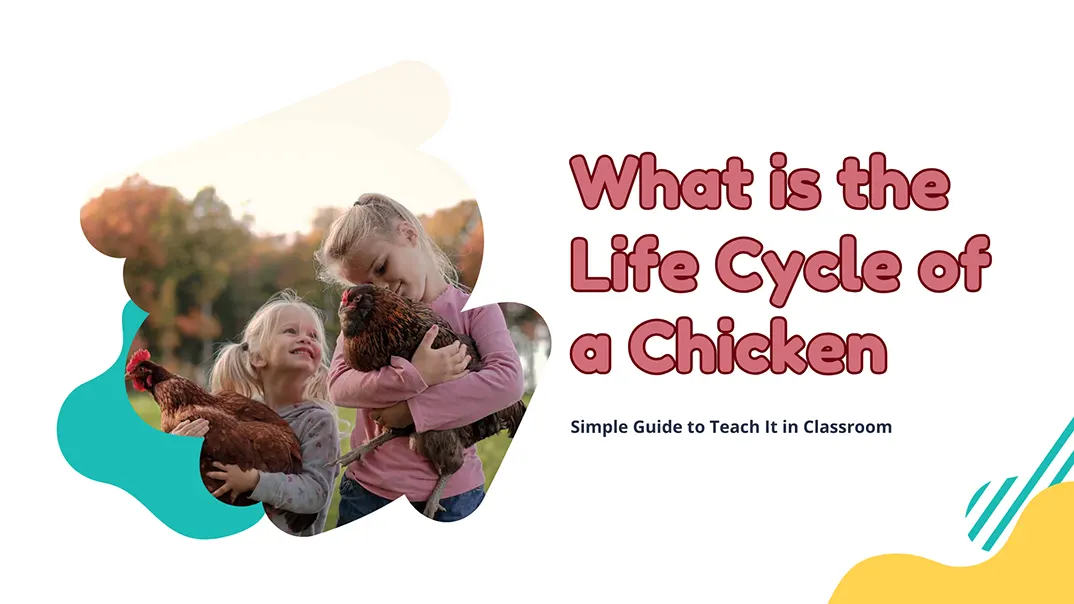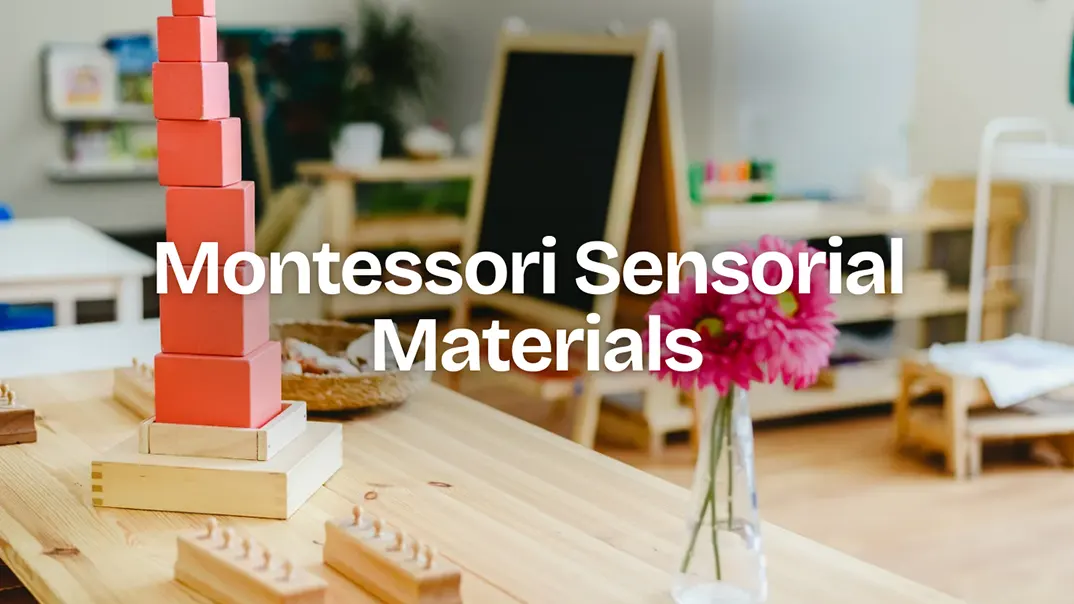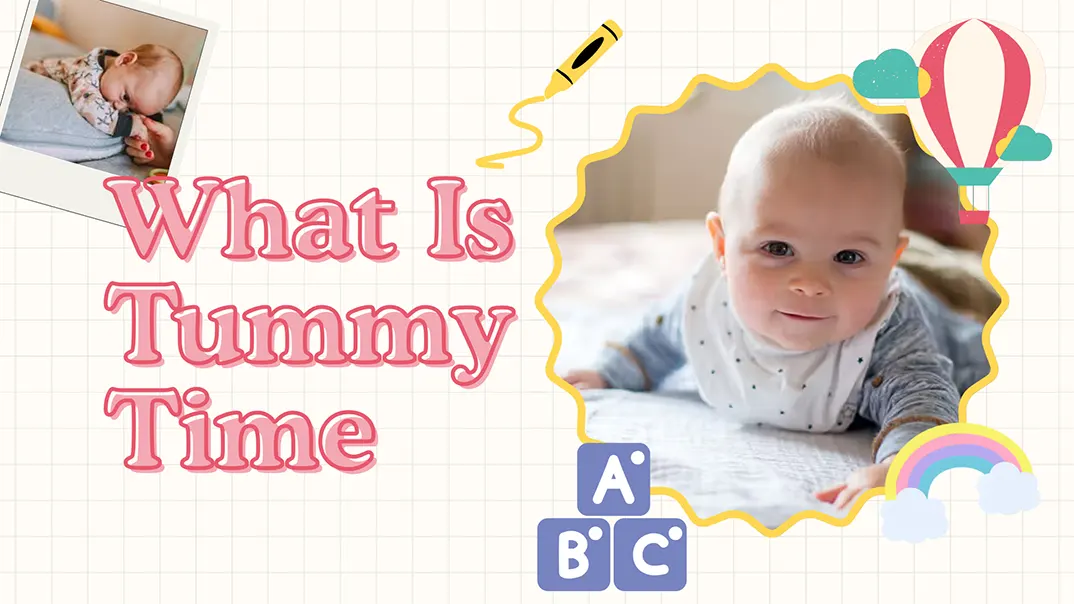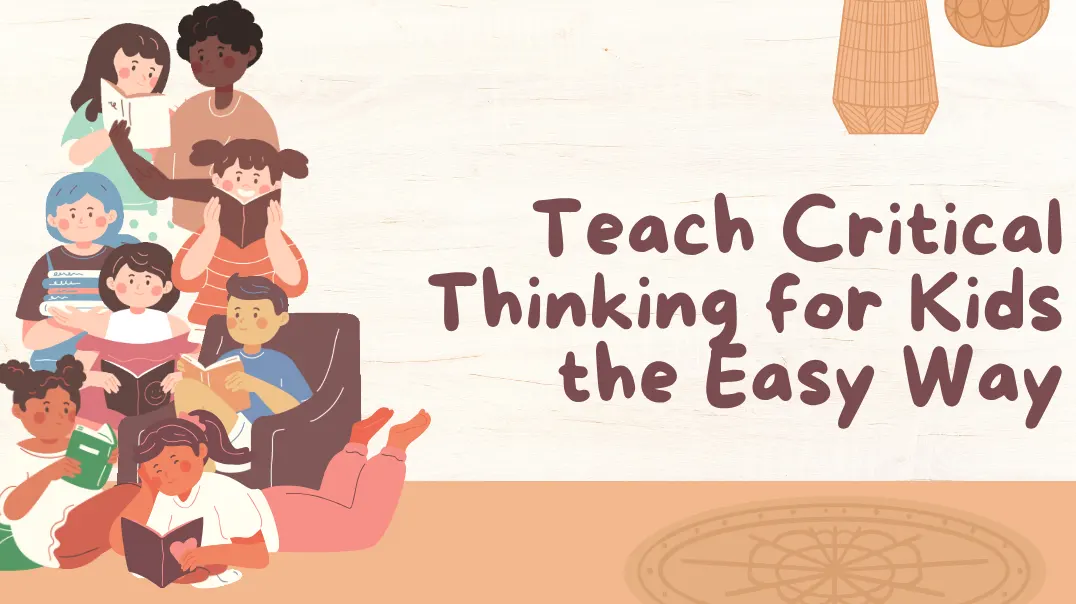Qual è la differenza tra valutazione formativa e sommativa nell'educazione della prima infanzia? Come possiamo, come educatori o titolari di asili nido, applicarle efficacemente? Soprattutto, quale tipologia supporta davvero lo sviluppo del bambino e come possiamo utilizzarle entrambe senza sopraffare i giovani studenti?
Comprendere la differenza tra valutazione formativa e valutazione sommativa è essenziale nell'educazione della prima infanzia. La valutazione formativa si concentra sul feedback continuo durante il processo di apprendimento, aiutando gli insegnanti ad adattare l'insegnamento in tempo reale, mentre la valutazione sommativa valuta i risultati di apprendimento dei bambini al termine di un periodo. Entrambe sono cruciali, ma perseguono scopi diversi nell'educazione della prima infanzia.
Curiosi di sapere come funzionano questi tipi di valutazione nella pratica? Volete sapere quali metodi si allineano meglio agli standard di apprendimento precoce e agli obiettivi di sviluppo del bambino? Continuate a leggere per scoprire la differenza tra valutazione formativa e valutazione sommativa, con confronti dettagliati, esempi concreti e consigli pratici da applicare in classe o a casa. Questa guida completa vi aiuterà a prendere decisioni consapevoli che influiscono positivamente sui risultati di apprendimento dei bambini.
Che cosa è una valutazione formativa?
La valutazione formativa è il processo continuo e quotidiano di osservazione e valutazione dell'apprendimento e del comportamento di un bambino durante l'insegnamento. A differenza delle valutazioni sommative, che valutano i risultati al termine di un periodo di apprendimento, le valutazioni formative sono progettate per fornire informazioni sull'insegnamento man mano che l'apprendimento si sviluppa. Questo metodo è fondamentale per riconoscere il percorso di sviluppo di un bambino e apportare tempestivamente modifiche nelle classi della prima infanzia.
In pratica, quando un insegnante pone domande aperte a un bambino durante un'attività di gruppo o osserva come interagisce con un nuovo puzzle, sta conducendo una valutazione formativa. Questi momenti offrono agli educatori una visione immediata di ciò che il bambino ha capito, quali competenze sta sviluppando e dove potrebbe aver bisogno di supporto.
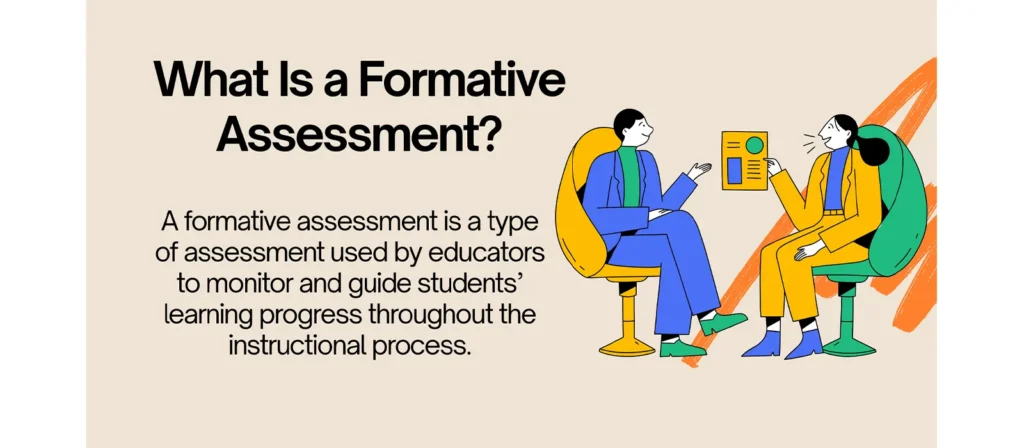
Caratteristiche chiave di una valutazione formativa efficace
Per comprendere appieno la differenza tra valutazione formativa e sommativa, è utile riconoscere i tratti unici delle pratiche formative:
- Continuo e orientato al processo:Si verifica durante tutto il percorso di apprendimento, non solo alla fine.
- Basato sul feedback:Gli insegnanti forniscono feedback in tempo reale, aiutando i bambini a riconoscere cosa hanno fatto bene e cosa potrebbero provare a fare diversamente.
- Flessibile e adattabile: Le strategie cambiano in base alle risposte del bambino. Se un bambino ha difficoltà con un compito, l'insegnante può modificare il livello di difficoltà o fornire immediatamente un supporto aggiuntivo.
- Incorporato nelle attività quotidiane: Non c'è bisogno di test formali: i centri di apprendimento, il gioco, la narrazione e persino le transizioni possono essere opportunità di osservazione.
- Non classificato: Non c'è la pressione di dare un punteggio; si tratta di capire, non di giudicare.
- Collaborativo: Spesso comporta discussioni tra bambini e insegnanti, promuovendo la riflessione e la consapevolezza di sé, anche negli studenti più giovani.
Ad esempio, se un bambino sta costruendo una torre e si frustra quando cade, un insegnante potrebbe osservare strategie di problem-solving o porre una domanda come: "Cosa potresti provare ora per renderla più forte?". Questo momento cattura il pensiero del bambino e alimenta resilienza e creatività, competenze che nessun test scritto può veramente misurare.
Perché la valutazione formativa è importante nell'apprendimento precoce
La prima infanzia è un periodo fondamentale nello sviluppo del bambino. La valutazione formativa fornisce spunti immediati che aiutano gli insegnanti a modellare il ambiente di apprendimento Per supportare la crescita dei bambini. Promuove l'apprendimento attivo e l'insegnamento reattivo, consentendo agli educatori di riconoscere stili di apprendimento, ritardi nello sviluppo e punti di forza emergenti. Ciò favorisce un'esperienza educativa inclusiva e di supporto, garantendo che nessun bambino venga lasciato indietro.
Pro e contro della valutazione formativa

Vantaggi della valutazione formativa
- Supporta l'apprendimento individualizzato: Gli insegnanti possono personalizzare l'insegnamento in base alle esigenze, ai punti di forza e agli interessi reali di un bambino.
- Incoraggia il coinvolgimento attivo: I bambini diventano parte attiva del proprio apprendimento attraverso l'interazione e il feedback continui.
- Promuove l'intervento precoce: Le lacune nell'apprendimento o i ritardi nello sviluppo vengono identificati precocemente, consentendo un supporto tempestivo.
- Ambiente a basso stress: Poiché è informale e non valutato, i bambini sperimentano meno pressione e ansia.
- Rafforza le relazioni insegnante-studente: L'osservazione e l'interazione frequenti rafforzano la fiducia e la comprensione.
Svantaggi della valutazione formativa
- Richiede tempo: Le osservazioni quotidiane, gli appunti e gli aggiustamenti della pianificazione richiedono un notevole sforzo da parte degli insegnanti.
- Rischio di soggettività: In assenza di rubriche chiare, le interpretazioni possono variare da un educatore all'altro.
- Mancanza di standardizzazione: Potrebbe essere difficile confrontare i progressi tra studenti o classi.
- Difficile da quantificare: La natura qualitativa lo rende meno adatto alla rendicontazione ufficiale o alle valutazioni esterne.
Che cosa è una valutazione sommativa?
La valutazione sommativa è un metodo formale per valutare i progressi di apprendimento di un bambino al termine di un periodo di istruzione, come un quadrimestre, un semestre o una specifica unità di studio. L'educazione della prima infanzia fornisce un'istantanea cumulativa dei risultati raggiunti dal bambino in alfabetizzazione, matematica, abilità sociali e traguardi evolutivi. A differenza della valutazione formativa, che informa l'insegnamento, la valutazione sommativa misura i risultati di apprendimento e spesso contribuisce a rendicontazioni più ampie o a decisioni curriculari.

Caratteristiche principali della valutazione sommativa
Le valutazioni sommative sono caratterizzate dalla loro natura strutturata e basata sui risultati. Tra le caratteristiche principali figurano:
- Finalità: Svolto al termine di un ciclo di apprendimento.
- Standardizzato o formale: Spesso utilizza rubriche, guide di punteggio o parametri di riferimento.
- Incentrato sulle prestazioni: Valuta ciò che un bambino ha imparato, non come lo ha imparato.
- Basato sulla documentazione: Spesso i risultati vengono registrati per essere utilizzati nei resoconti ufficiali o nelle comunicazioni con i genitori.
- Meno frequenti: A differenza delle valutazioni formative, le valutazioni sommative vengono effettuate periodicamente, non quotidianamente.
Queste caratteristiche aiutano gli educatori a valutare se gli obiettivi di apprendimento sono stati raggiunti e come migliorare l'erogazione del programma didattico.
Perché la valutazione formativa è importante nell'educazione della prima infanzia
La valutazione sommativa svolge un ruolo fondamentale nell'educazione della prima infanzia, offrendo una panoramica strutturata dei progressi evolutivi del bambino a intervalli chiave. Aiuta educatori, dirigenti scolastici e genitori a comprendere il livello di raggiungimento degli obiettivi di apprendimento, orientando le decisioni relative agli adattamenti del curriculum, alle strategie di classe e alla preparazione scolastica. Rilevando la crescita cumulativa in tutti gli ambiti accademici, sociali e motori, le valutazioni sommative contribuiscono a una comprensione olistica delle capacità di ogni bambino.
Inoltre, queste valutazioni rappresentano strumenti di comunicazione essenziali tra scuola e famiglia. Garantiscono trasparenza, aiutando chi si prende cura dei bambini a vedere il quadro generale del percorso di apprendimento del proprio figlio. Pur non essendo flessibili come le valutazioni formative, gli strumenti sommativi offrono importanti punti di controllo che convalidano l'efficacia delle pratiche didattiche e garantiscono che i bambini siano sulla buona strada per il futuro successo accademico.
Pro e contro della valutazione sommativa

Vantaggi della valutazione sommativa
- Misurazione precisa dei risultati: Fornisce dati strutturati per verificare se gli obiettivi di apprendimento sono stati raggiunti.
- Utile per la segnalazione: I risultati sono facili da comunicare alle famiglie, agli amministratori o ai decisori politici.
- Aiuta nella valutazione del curriculum: Offre spunti su quali strategie o materiali didattici siano stati efficaci.
- Supporta le transizioni educative: Valutazioni come i test di preparazione alla scuola materna influenzano le decisioni di inserimento scolastico.
Svantaggi della valutazione sommativa
- Vista istantanea: Si concentra su ciò che è stato realizzato in un dato momento, perdendo potenzialmente di vista progressi di sviluppo più ampi.
- Pressione sui bambini: Anche nella scuola materna le valutazioni strutturate possono causare ansia o frustrazione.
- Valore di feedback limitato: I risultati potrebbero arrivare troppo tardi per adattare l'insegnamento in modo significativo.
- Potrebbe trascurare il contesto: Non sempre tiene conto degli ambienti di apprendimento, dei fattori culturali o della predisposizione emotiva.
Scopri la nostra gamma completa di prodotti
Accedi al nostro catalogo completo con mobili e attrezzature da gioco di alta qualità per asili e scuole.
Differenza tra valutazione formativa e sommativa
Nell'educazione della prima infanzia, dove l'apprendimento è evolutivo e olistico, saper distinguere tra valutazione formativa e sommativa aiuta a garantire che si vada incontro al bambino così come si trova, senza esercitare pressioni inappropriate o perdere di vista indicatori di progresso critici.
Puntate basse contro puntate alte
Valutazione formativa
Le valutazioni formative sono considerate a basso rischio. Sono integrate nell'insegnamento quotidiano, guidando l'insegnamento e l'apprendimento senza influenzare i voti o le decisioni di avanzamento. Non c'è pressione sui bambini per il rendimento, il che consente un'osservazione più naturale di competenze e comportamenti.
Valutazione sommativa
Le valutazioni sommative sono spesso molto rischiose, soprattutto quando vengono utilizzate per determinare la preparazione scolastica, soddisfare requisiti politici o presentare relazioni agli enti finanziatori. Queste valutazioni riassumono ciò che il bambino ha appreso in un periodo di tempo definito e possono influenzare le decisioni sul suo percorso educativo.
Informale vs Formale
Valutazione formativa
Le valutazioni formative sono in genere informali. Gli insegnanti raccolgono informazioni durante le attività quotidiane attraverso conversazioni, osservazioni di gioco e attività spontanee. Queste valutazioni sono flessibili e si inseriscono in interazioni naturali, senza richiedere ambienti di valutazione strutturati.
Valutazione sommativa
Le valutazioni sommative sono più formali e pianificate. Spesso utilizzano strumenti standardizzati come checklist di sviluppo, pagelle o valutazioni formali. Queste vengono solitamente programmate in momenti specifici, come la fine di un quadrimestre, e sono documentate per la revisione amministrativa o dei genitori.

Tempistica
Valutazione formativa
Le valutazioni formative avvengono costantemente durante il processo di apprendimento. Gli insegnanti osservano i bambini impegnati nelle attività e adattano l'insegnamento in tempo reale, consentendo un supporto immediato e personalizzato in base alle esigenze di sviluppo di ciascun bambino.
Valutazione sommativa
Le valutazioni sommative si svolgono dopo l'apprendimento. Valutano i progressi cumulativi al termine di un'unità di apprendimento, di un progetto o di un semestre e riassumono i risultati raggiunti da un bambino in un periodo di tempo definito.
Focus e portata
Valutazione formativa
La valutazione formativa si concentra sul processo di apprendimento. Esplora il modo in cui i bambini pensano, interagiscono e risolvono i problemi. L'ambito è spesso limitato e immediato, concentrandosi sullo sviluppo attuale e sulle strategie di apprendimento del momento.
Valutazione sommativa
Le valutazioni sommative si concentrano sui risultati di apprendimento. Valutano ciò che il bambino ha appreso e se gli obiettivi di apprendimento sono stati raggiunti. L'ambito è più ampio e considera la performance complessiva in più ambiti nel tempo.
Stile di feedback
Valutazione formativa
Le valutazioni formative forniscono un feedback immediato e descrittivo. Gli insegnanti rispondono immediatamente, offrendo guida, incoraggiamento o suggerimenti durante le attività dei bambini. Questo feedback è spesso colloquiale e personalizzato, supportando la riflessione e l'autoregolazione dei bambini.
Valutazione sommativa
Le valutazioni sommative offrono un feedback valutativo posticipato. In genere, si presenta sotto forma di report scritto, punteggio o discussione riassuntiva al termine del periodo di apprendimento. Sebbene utile per documentare i risultati, il contributo non influenza l'apprendimento in corso, poiché avviene dopo la conclusione dell'insegnamento.
Scopo delle valutazioni formative rispetto alle valutazioni sommative
Le valutazioni formative e sommative svolgono ciascuna una funzione distinta: una guida l'insegnamento durante il processo di apprendimento, mentre l'altra valuta ciò che è stato appreso al termine dell'insegnamento. Insieme, forniscono agli educatori un kit completo di strumenti per supportare e monitorare lo sviluppo dei bambini in diversi ambiti. Gli insegnanti possono supportare al meglio il percorso di apprendimento unico di ogni bambino allineando i metodi di valutazione a chiari obiettivi educativi.

Scopo della valutazione formativa
La valutazione formativa supporta e guida l'apprendimento in tempo reale. Offre agli insegnanti preziose informazioni su come un bambino pensa, reagisce e si sviluppa in quel momento, consentendo di personalizzare l'insegnamento di conseguenza.
Gli scopi principali della valutazione formativa includono:
- Adattare l'insegnamento alle esigenze di apprendimento immediate dei bambini
- Identificare precocemente e con precisione le tappe o i ritardi dello sviluppo
- Incoraggiare la riflessione e l'impegno dei bambini attraverso il feedback
- Promuovere una mentalità di crescita, poiché i bambini imparano che gli errori fanno parte dell'apprendimento
- Rafforzare le relazioni insegnante-bambino attraverso l'osservazione e il dialogo costanti
- Supportare l'apprendimento differenziato, soprattutto in classi diversificate
- Documentare l'apprendimento nel tempo in modo informale e naturalistico
Scopo della valutazione sommativa
La valutazione sommativa, al contrario, misura ciò che un bambino ha appreso al termine di un periodo di istruzione specifico. Fornisce parametri di riferimento chiari e documentazione dei progressi, essenziali per la pianificazione del programma e la comunicazione con la famiglia.
Gli scopi principali della valutazione sommativa sono:
- Misurazione dei risultati di apprendimento dopo un periodo di istruzione
- Segnalare i progressi ai genitori e agli amministratori in modo strutturato
- Valutazione dell'efficacia del programma e dell'implementazione del curriculum
- Garantire la responsabilità dei sistemi educativi, comprese le istituzioni private
- Supportare le transizioni, come dalla scuola materna alla scuola primaria
- Identificazione delle aree che necessitano di ulteriore supporto o intervento dopo la revisione
- Garantire l'allineamento con gli standard di apprendimento o con i quadri della prima infanzia
Esempi di valutazione formativa e sommativa
La differenza tra valutazione formativa e sommativa diventa molto più chiara quando consideriamo esempi concreti tratti dall'educazione della prima infanzia. Sebbene entrambe siano essenziali per monitorare e supportare lo sviluppo, i tempi, lo scopo e l'esecuzione differiscono. Di seguito sono riportati esempi pratici di valutazione formativa e sommativa che evidenziano il funzionamento di ciascun tipo di valutazione in età prescolare e contesti di apprendimento precoce.
Esempi di valutazione formativa
Le valutazioni formative sono continue, informali e utilizzate per guidare l'insegnamento durante il processo di apprendimento. Aiutano gli insegnanti a valutare il livello di comprensione di un concetto da parte di un bambino e il supporto di cui ha bisogno. Ecco alcuni esempi di valutazione formativa:
- Osservazione durante il gioco
Un insegnante osserva come un bambino ordina i blocchi in base al colore e alla dimensione per valutare la sua comprensione precoce della matematica. - Note aneddotiche
Durante la lettura delle storie, l'insegnante nota come il bambino risponde alle domande o racconta parti della storia. - Disegni o risposte veloci
Dopo un'attività scientifica, i bambini disegnano le loro osservazioni, aiutando l'insegnante a valutarne la comprensione. - Domande interattive
Durante un'attività di gruppo, l'insegnante pone domande aperte come "Perché pensi che sia successo questo?" per valutare le capacità di ragionamento. - Diari o portfolio di apprendimento
Collezionare opere d'arte o campioni di scrittura nel tempo rivela progressi nello sviluppo e nei processi di pensiero.
Esempi di valutazione sommativa
Le valutazioni sommative valutano ciò che un bambino ha appreso al termine di un periodo di apprendimento. Forniscono un'istantanea dei risultati e sono in genere più strutturate. Ecco alcuni esempi di valutazione sommativa:
- Progetto di fine unità
Dopo una settimana di studio del meteo, i bambini creano dei poster che mostrano i tipi di tempo e l'abbigliamento più adatto, dimostrando di aver compreso. - Liste di controllo delle tappe dello sviluppo
Alla fine del semestre gli insegnanti valutano se i bambini hanno raggiunto i principali obiettivi di sviluppo. - Valutazioni di preparazione all'asilo
Questi strumenti formali valutano le competenze di lettura, scrittura e calcolo, nonché le competenze socio-emotive, per determinare il livello di preparazione del bambino al passaggio alla scuola. - Compiti di prestazione
Ai bambini viene chiesto di completare un'attività strutturata per misurare abilità specifiche, come la creazione di uno schema semplice o il racconto di una storia. - Valutazioni standardizzate (usato con più parsimonia nei primi anni)
Le istituzioni o i distretti potrebbero utilizzarli per valutare l'efficacia del programma anziché la crescita individuale.
Valutazione formativa vs. valutazione sommativa: come monitorarle?
Monitorare efficacemente le valutazioni formative e sommative è fondamentale per comprendere il percorso di apprendimento di un bambino. Ogni tipo di valutazione richiede metodi di monitoraggio distinti per garantire che i dati raccolti siano significativi, fruibili e appropriati per lo sviluppo nei contesti della prima infanzia.
Come monitorare la valutazione formativa
Poiché le valutazioni formative sono continue e informali, monitorarle implica una documentazione e una riflessione costanti. Ecco alcuni modi efficaci per organizzare e monitorare i dati formativi:
- Osservare i bambini durante le attività quotidiane e documentare comportamenti specifici, uso del linguaggio e interazioni che riflettono l'apprendimento o i progressi nello sviluppo.
- Mantenere registri o registri di attività regolarmente revisionati e aggiornati per informare la pianificazione e il supporto individuale.
- Raccogliere campioni dei lavori di un bambino nel tempo per dimostrare visivamente la crescita nei vari ambiti di apprendimento.
- Utilizzare quadri di osservazione strutturati per monitorare costantemente gli indicatori di sviluppo e allinearli agli obiettivi del curriculum.
- Rifletti sui progressi dell'apprendimento attraverso brevi narrazioni scritte o diari che colleghino il comportamento osservato con gli adattamenti didattici.
- Inserisci osservazioni e note in una piattaforma digitale, consentendo l'etichettatura, la categorizzazione e l'allineamento in tempo reale agli standard di apprendimento.
La chiave è la documentazione continua, l'interpretazione immediata e la pianificazione basata sulle informazioni raccolte.
Come monitorare la valutazione sommativa?
Le valutazioni sommative sono più strutturate e si svolgono a intervalli definiti. Richiedono strumenti standardizzati e metodi di punteggio coerenti perché vengono utilizzate per valutazioni e rendicontazioni formali. Le strategie per il monitoraggio delle valutazioni sommative includono:
- Rivedere i campioni di lavoro raccolti al termine di un periodo di formazione e analizzarli per verificare la padronanza delle competenze o la comprensione dei concetti.
- Valutare le prestazioni sulla base di criteri prestabiliti che definiscono i risultati attesi per diverse aree di sviluppo.
- Riassumere i risultati in un formato strutturato che comprenda i progressi cognitivi, linguistici, fisici e socio-emotivi.
- Utilizzare i dati cumulativi raccolti nel tempo per creare un rapporto finale che rifletta i risultati raggiunti da ogni bambino e il suo livello di preparazione per la successiva fase di apprendimento.
- Conservare tutta la documentazione riassuntiva in un sistema centralizzato che garantisca coerenza e accessibilità per la pianificazione futura o per la rendicontazione amministrativa.
- Incrociare i risultati sommativi con approfondimenti formativi per fornire un quadro completo del percorso di apprendimento e delle esigenze educative del bambino.
Il monitoraggio della valutazione sommativa mira a registrare i risultati di apprendimento a lungo termine e a garantire l'allineamento con gli obiettivi e gli standard di apprendimento.
Tabella di confronto tra valutazione formativa e sommativa
| Aspetto | Valutazione formativa | Valutazione sommativa |
|---|---|---|
| Scopo | Monitora costantemente i progressi e l'apprendimento degli studenti. | Valuta il rendimento complessivo dello studente alla fine di un periodo. |
| Tempistica | Svolto durante tutto il processo di apprendimento. | Svolto alla fine di una lezione, di un'unità o di un trimestre. |
| Messa a fuoco | Si concentra sullo sviluppo e sul progresso degli studenti. | Si concentra sulla misurazione del rendimento degli studenti. |
| Feedback | Fornisce feedback continui e fruibili per il miglioramento. | Fornisce un feedback finale, spesso con minori possibilità di miglioramento. |
| Esempi | Osservazioni, quiz, discussioni, lavori di gruppo, diari. | Esami finali, progetti, verifiche di fine semestre, portfolio. |
| Impatto sull'apprendimento | Aiuta ad adattare i metodi di insegnamento e a orientare l'apprendimento successivo. | Misura i risultati dell'apprendimento dopo l'istruzione. |
| Coinvolgimento degli studenti | Gli studenti sono spesso coinvolti in attività di autovalutazione e riflessione. | Di solito, la valutazione degli studenti avviene alla fine, con scarse possibilità di cambiamenti immediati. |
| Frequenza | Frequente e continuo. | Poco frequente, in genere alla fine di un periodo di apprendimento. |
Trasforma la tua aula con soluzioni di arredamento personalizzate
Metodi efficaci per condurre le valutazioni: valutazione formativa vs. valutazione sommativa
Condurre valutazioni efficaci è fondamentale per supportare lo sviluppo dei bambini nell'educazione della prima infanzia. Le valutazioni formative e sommative svolgono ruoli essenziali, ma richiedono strategie di implementazione diverse. In questo articolo, esploriamo le strategie per implementare entrambi i tipi di valutazione al fine di massimizzarne l'efficacia.
Strategie per l'implementazione della valutazione formativa
Le valutazioni formative sono continue e sono progettate per fornire un feedback immediato che possa orientare le decisioni didattiche. Ecco alcune strategie pratiche per aiutare gli educatori a ottimizzare l'uso delle valutazioni formative nell'educazione della prima infanzia:
1. Stabilire aspettative chiare per l'apprendimento
Creare criteri chiari e trasparenti aiuta insegnanti e studenti a comprendere gli obiettivi di ogni lezione. Quando i bambini sanno cosa ci si aspetta da loro, possono impegnarsi in modo più significativo nell'apprendimento e assumersi la responsabilità dei propri progressi.
2. Promuovere l'autoriflessione negli studenti
Incoraggiare i bambini a riflettere sul proprio lavoro e sui propri progressi aumenta la consapevolezza dei propri punti di forza e delle aree da migliorare. Attraverso semplici domande e attività guidate, i bambini imparano a valutare il proprio apprendimento, il che rafforza la loro capacità di stabilire obiettivi personali e di migliorare nel tempo.
3. Fornire feedback costruttivi e attuabili
La valutazione formativa dovrebbe essere utilizzata per offrire un feedback dettagliato e costruttivo che guidi gli studenti verso il miglioramento. Il feedback dovrebbe essere specifico, sottolineando i passaggi necessari per progredire e incoraggiando i bambini a riflettere sul proprio lavoro in modo da promuovere la crescita, piuttosto che una mera valutazione.
4. Promuovere il dialogo e la collaborazione
Il dialogo coinvolgente tra insegnante e studente e tra pari crea un ambiente di apprendimento dinamico. Attraverso conversazioni e attività collaborative, i bambini possono imparare gli uni dagli altri e sviluppare capacità comunicative, ricevendo al contempo feedback sul loro lavoro.
5. Incoraggiare la motivazione positiva e rafforzare l'autostima
Creare un ambiente di supporto in cui i bambini si sentano sicuri di correre rischi e commettere errori è fondamentale. Riconoscere l'impegno e celebrare i progressi, invece di concentrarsi solo sul risultato finale, rafforza la motivazione e incoraggia un atteggiamento positivo verso l'apprendimento.
6. Colmare il divario tra le prestazioni attuali e quelle desiderate
La valutazione formativa dovrebbe individuare lacune nelle conoscenze o nelle competenze e offrire opportunità di supporto mirato. Gli insegnanti possono utilizzare queste informazioni per adattare l'insegnamento e creare opportunità affinché gli studenti raggiungano il loro pieno potenziale, concentrandosi su aree specifiche di crescita.
7. Utilizzare i dati per modellare l'insegnamento futuro
Le informazioni raccolte attraverso la valutazione formativa dovrebbero monitorare i progressi individuali e contribuire a definire le strategie didattiche complessive. Analizzando i dati provenienti da osservazioni e valutazioni, gli educatori possono adattare i propri metodi di insegnamento alle diverse esigenze degli studenti, garantendo un miglioramento continuo e un apprendimento mirato.
Strategie per l'implementazione della valutazione sommativa
Le valutazioni sommative svolgono un ruolo essenziale nel misurare i progressi complessivi degli studenti. Di seguito sono riportate alcune strategie per garantire che queste valutazioni siano pratiche e in linea con gli obiettivi di apprendimento.
1. Utilizzare rubriche chiare
Le rubriche definiscono aspettative chiare per gli studenti, delineando cosa costituisce una buona prestazione. Aiutano gli studenti a comprendere i criteri di valutazione e forniscono una tabella di marcia per il successo. Rubriche chiare rendono il processo di valutazione più trasparente e garantiscono una valutazione coerente, consentendo agli studenti di concentrarsi sul raggiungimento di obiettivi specifici.
2. Progetta domande efficaci e chiare
Le domande devono essere chiare e appropriate allo sviluppo, lasciando spazio alla creatività. I prompt aperti consentono agli studenti di dimostrare la propria comprensione in modo significativo attraverso il disegno o la narrazione. Questo approccio incoraggia i bambini a riflettere sul proprio apprendimento e a esprimerlo in modo diverso. Domande ben formulate garantiscono inoltre che le valutazioni siano imparziali e pertinenti.
3. Assicurarsi che la valutazione sia completa
Una valutazione completa incoraggia gli studenti a collegare i diversi concetti di apprendimento. Invece di testare fatti isolati, gli studenti possono dimostrare la loro capacità di applicare competenze in diversi ambiti. Ad esempio, un progetto potrebbe richiedere ai bambini di combinare competenze linguistiche e creatività. Questo garantisce che la valutazione rifletta la totalità dell'esperienza di apprendimento.
4. Chiarire i parametri di valutazione
Definire chiaramente i parametri della valutazione riduce la confusione. Gli insegnanti dovrebbero specificare in anticipo la durata, le scadenze e i criteri di valutazione. Questo aiuta gli studenti a comprendere le aspettative e a gestire il tempo in modo efficace. Linee guida chiare garantiscono che gli studenti possano concentrarsi sulla dimostrazione delle proprie competenze senza stress inutile.
5. Considerare la valutazione alla cieca
La valutazione alla cieca contribuisce a garantire l'equità eliminando i pregiudizi dal processo di valutazione. Gli studenti vengono valutati oggettivamente quando la valutazione si basa esclusivamente sul lavoro in sé. Questo metodo può essere applicato a valutazioni strutturate o a compiti meno individualizzati. Promuove un ambiente di valutazione imparziale e incoraggia la parità di trattamento di tutti gli studenti.
6. Fornire feedback costruttivi e attuabili
Il feedback dovrebbe evidenziare i punti di forza e guidare le aree di miglioramento. Offrire suggerimenti concreti aiuta gli studenti a capire come migliorare le proprie prestazioni. Ad esempio, invece di limitarsi a correggere una risposta errata, gli insegnanti possono fornire suggerimenti per migliorare. Un feedback costruttivo motiva gli studenti a continuare a crescere e ad apprendere.
7. Rivedere e adattare le valutazioni in base alle prestazioni degli studenti
Dopo aver somministrato le valutazioni sommative, gli insegnanti dovrebbero esaminare i risultati e individuare le tendenze. Se molti studenti incontrano difficoltà con lo stesso concetto, ciò può indicare aree che necessitano di maggiore attenzione. Adattare le lezioni future in base ai dati di valutazione aiuta a individuare le aree in cui gli studenti necessitano di maggiore supporto. Questo approccio riflessivo migliora i risultati di apprendimento nel tempo.
Sfide della valutazione formativa e sommativa

Le sfide della valutazione formativa
1. Richieste di tempo e risorse
Sfida: Le valutazioni formative richiedono osservazione costante, feedback e documentazione dettagliata, il che può richiedere molto tempo agli insegnanti. Gestire i progressi di ogni bambino può rapidamente sopraffare gli insegnanti, soprattutto nelle classi più affollate.
Soluzione: Per gestire il tempo in modo efficace, gli insegnanti possono semplificare il processo di documentazione utilizzando strumenti digitali o app che aiutano a monitorare i progressi degli studenti in tempo reale. Anche riservare momenti specifici per l'osservazione mirata, ad esempio durante sessioni di lavoro autonomo o di gioco, può essere utile. Gli insegnanti possono creare rapide checklist o note di osservazione anziché lunghi report per ridurre il tempo dedicato alla documentazione.
2. Bilanciare la copertura completa dei domini di sviluppo
Sfida: Le valutazioni formative mirano a coprire più ambiti di sviluppo, come la crescita cognitiva, sociale ed emotiva, ma gli insegnanti possono avere difficoltà a valutare ogni ambito in modo equo, soprattutto in una classe numerosa.
Soluzione: Gli insegnanti possono creare quadri di valutazione olistici che includano attività mirate a diversi ambiti di sviluppo contemporaneamente. Ad esempio, durante un'attività di gioco di gruppo, un insegnante può osservare le abilità cognitive (problem-solving), abilità sociali (condivisione e cooperazione) e sviluppo emotivo (gestione della frustrazione). Un sistema di osservazione a rotazione garantisce che tutte le aree siano coperte in momenti e contesti diversi.
3. Soggettività e pregiudizi nelle osservazioni
Sfida: Poiché gran parte della valutazione formativa si basa sulle osservazioni degli insegnanti, sussiste il rischio che pregiudizi o soggettività influenzino la valutazione. Gli insegnanti potrebbero involontariamente favorire alcuni studenti sulla base di esperienze pregresse o percezioni personali.
Soluzione: Per ridurre al minimo i pregiudizi, gli insegnanti possono adottare metodi di osservazione più strutturati. L'utilizzo di rubriche o checklist per specifici comportamenti o capacità di osservazione può ridurre la soggettività. Gli insegnanti dovrebbero inoltre riflettere periodicamente sulle proprie osservazioni, considerare diverse prospettive (ad esempio, quelle degli assistenti o dei colleghi) e assicurarsi di osservare gli studenti in diversi contesti per ottenere una visione equilibrata dei progressi.
4. Mantenere il coinvolgimento degli studenti
Sfida: Le valutazioni formative continue potrebbero far sì che gli studenti si sentano costantemente valutati, provocando disimpegno o affaticamento.
Soluzione: Gli insegnanti possono integrare le valutazioni formative in attività interattive e divertenti che si allineano con l'apprendimento naturale dei bambini basato sul gioco. Ad esempio, giochi o attività di gruppo che richiedono osservazione possono mantenere gli studenti motivati. Inoltre, gli insegnanti possono garantire che le valutazioni siano rapide e integrate nelle attività quotidiane, in modo che non sembrino compiti separati o stressanti.
Le sfide della valutazione sommativa
1. Pressione del tempo e valutazione Workload
Sfida: Le valutazioni sommative richiedono molto tempo per essere somministrate e valutate, soprattutto quando gli insegnanti hanno una classe numerosa di bambini piccoli. Il processo di valutazione può diventare opprimente, causando stress e burnout.
Soluzione: Per ridurre il carico di lavoro di valutazione, gli insegnanti possono implementare valutazioni tra pari o autovalutazioni, in cui i bambini riflettono sul proprio lavoro o si scambiano feedback. Inoltre, le rubriche possono semplificare la valutazione rendendo chiare le aspettative e garantendo coerenza. Gli insegnanti possono anche valutare la possibilità di suddividere le valutazioni sommative in compiti più piccoli, che possono essere valutati in modo incrementale anziché in una volta sola.
2. Ambito limitato e semplificazione eccessiva
Sfida: Le valutazioni sommative spesso non riescono a cogliere l'intera gamma di capacità di un bambino, poiché tendono a concentrarsi su competenze o conoscenze specifiche. Questo può portare a un quadro incompleto dello sviluppo del bambino.
Soluzione: Per affrontare questo problema, gli insegnanti possono utilizzare diverse forme di valutazione sommativa, come una combinazione di progetti, presentazioni orali e prove scritte. Ciò consente una visione più completa delle capacità del bambino in diversi ambiti. Ad esempio, è possibile includere un portfolio dei lavori del bambino durante il quadrimestre per mostrare i progressi in diverse aree, come la creatività, il linguaggio e le competenze sociali.
3. Ansia e motivazione degli studenti
Sfida: Le valutazioni sommative spesso causano ansia nei bambini piccoli, soprattutto perché sono generalmente considerate valutazioni ad alto rischio. Questo stress può influire sul rendimento e sulla motivazione.
Soluzione: Gli insegnanti possono ridurre l'ansia creando un ambiente di valutazione positivo. Le valutazioni sommative dovrebbero enfatizzare l'impegno e i progressi, invece di concentrarsi esclusivamente sul risultato. Gli insegnanti possono anche utilizzare attività preparatorie, come esercizi pratici o simulazioni di valutazione, che simulano la valutazione in modo poco stressante, per rafforzare la fiducia degli studenti e ridurre lo stress legato alla prova.
4. Difficoltà nella differenziazione per tutti gli studenti
Sfida: Le valutazioni sommative sono in genere standardizzate per tutti gli studenti, il che rende difficile soddisfare le diverse esigenze di apprendimento dei bambini più piccoli. Un approccio univoco potrebbe non valutare accuratamente le capacità di ogni studente.
Soluzione: Gli insegnanti possono offrire opzioni di valutazione differenziate che tengano conto di diversi stili di apprendimento e abilità. Ad esempio, uno studente visivo potrebbe completare un disegno come parte della valutazione, mentre uno studente verbale potrebbe presentare una presentazione orale. Inoltre, gli insegnanti possono offrire soluzioni per gli studenti con bisogni speciali, come orari più lunghi o formati alternativi, per garantire equità e inclusività.
Conclusione
Comprendendo le differenze tra valutazioni formative e sommative, gli educatori possono utilizzare entrambe per creare un approccio equilibrato, reattivo e completo al monitoraggio e al supporto della crescita dei bambini. Le valutazioni formative garantiscono che i percorsi di apprendimento dei bambini siano adattati e alimentati man mano che progrediscono. Al contrario, le valutazioni sommative forniscono un quadro più chiaro del loro sviluppo, orientando le pratiche didattiche e le strategie educative a lungo termine.
